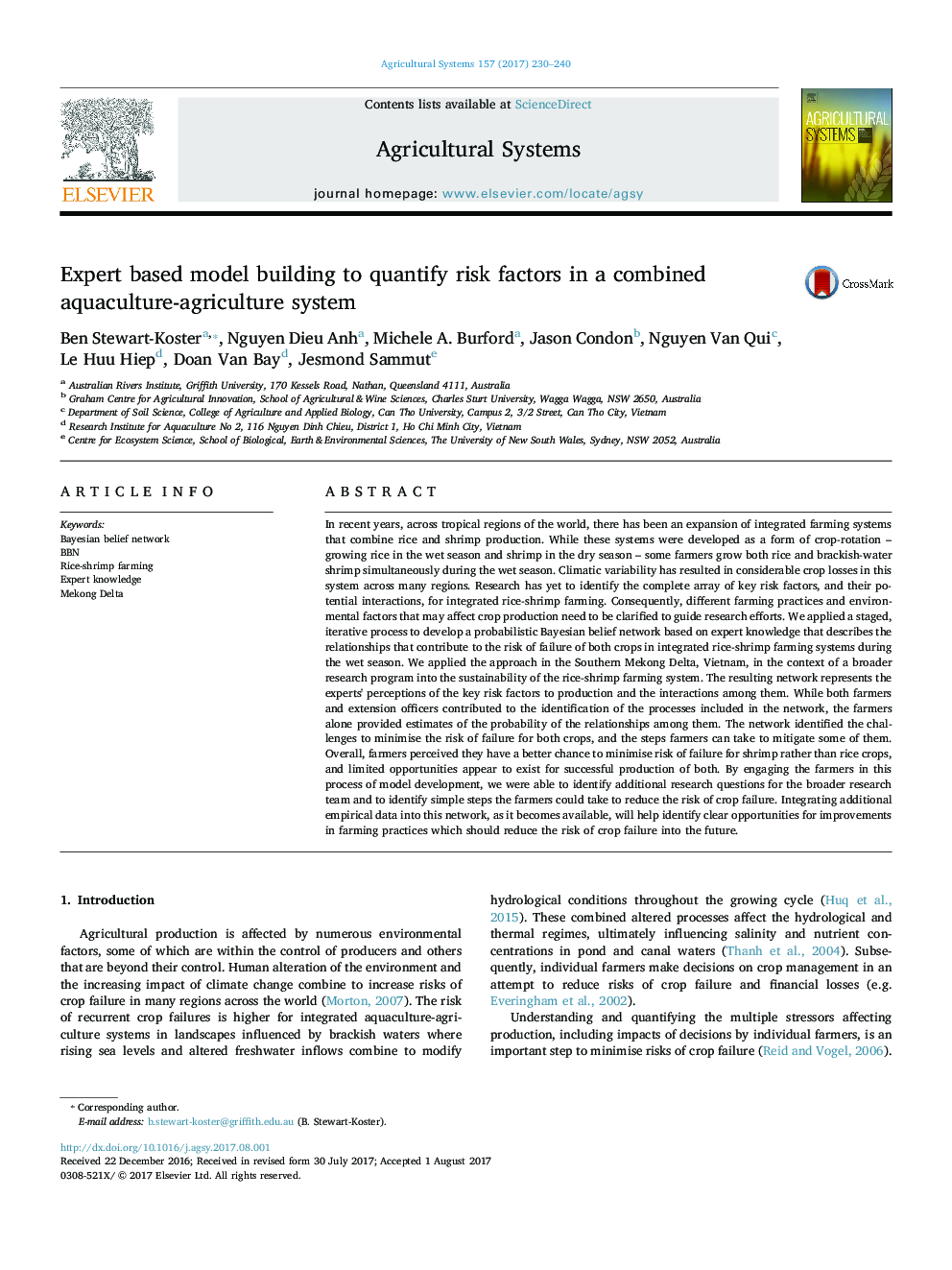| کد مقاله | کد نشریه | سال انتشار | مقاله انگلیسی | نسخه تمام متن |
|---|---|---|---|---|
| 5759630 | 1623213 | 2017 | 11 صفحه PDF | دانلود رایگان |
عنوان انگلیسی مقاله ISI
Expert based model building to quantify risk factors in a combined aquaculture-agriculture system
ترجمه فارسی عنوان
ساختار مدل کارشناس برای تعیین عوامل خطر در یک سیستم کشاورزی آبیاری کشاورزی
دانلود مقاله + سفارش ترجمه
دانلود مقاله ISI انگلیسی
رایگان برای ایرانیان
کلمات کلیدی
موضوعات مرتبط
علوم زیستی و بیوفناوری
علوم کشاورزی و بیولوژیک
علوم کشاورزی و بیولوژیک (عمومی)
چکیده انگلیسی
In recent years, across tropical regions of the world, there has been an expansion of integrated farming systems that combine rice and shrimp production. While these systems were developed as a form of crop-rotation - growing rice in the wet season and shrimp in the dry season - some farmers grow both rice and brackish-water shrimp simultaneously during the wet season. Climatic variability has resulted in considerable crop losses in this system across many regions. Research has yet to identify the complete array of key risk factors, and their potential interactions, for integrated rice-shrimp farming. Consequently, different farming practices and environmental factors that may affect crop production need to be clarified to guide research efforts. We applied a staged, iterative process to develop a probabilistic Bayesian belief network based on expert knowledge that describes the relationships that contribute to the risk of failure of both crops in integrated rice-shrimp farming systems during the wet season. We applied the approach in the Southern Mekong Delta, Vietnam, in the context of a broader research program into the sustainability of the rice-shrimp farming system. The resulting network represents the experts' perceptions of the key risk factors to production and the interactions among them. While both farmers and extension officers contributed to the identification of the processes included in the network, the farmers alone provided estimates of the probability of the relationships among them. The network identified the challenges to minimise the risk of failure for both crops, and the steps farmers can take to mitigate some of them. Overall, farmers perceived they have a better chance to minimise risk of failure for shrimp rather than rice crops, and limited opportunities appear to exist for successful production of both. By engaging the farmers in this process of model development, we were able to identify additional research questions for the broader research team and to identify simple steps the farmers could take to reduce the risk of crop failure. Integrating additional empirical data into this network, as it becomes available, will help identify clear opportunities for improvements in farming practices which should reduce the risk of crop failure into the future.
ناشر
Database: Elsevier - ScienceDirect (ساینس دایرکت)
Journal: Agricultural Systems - Volume 157, October 2017, Pages 230-240
Journal: Agricultural Systems - Volume 157, October 2017, Pages 230-240
نویسندگان
Ben Stewart-Koster, Nguyen Dieu Anh, Michele A. Burford, Jason Condon, Nguyen Van Qui, Le Huu Hiep, Doan Van Bay, Jesmond Sammut,
